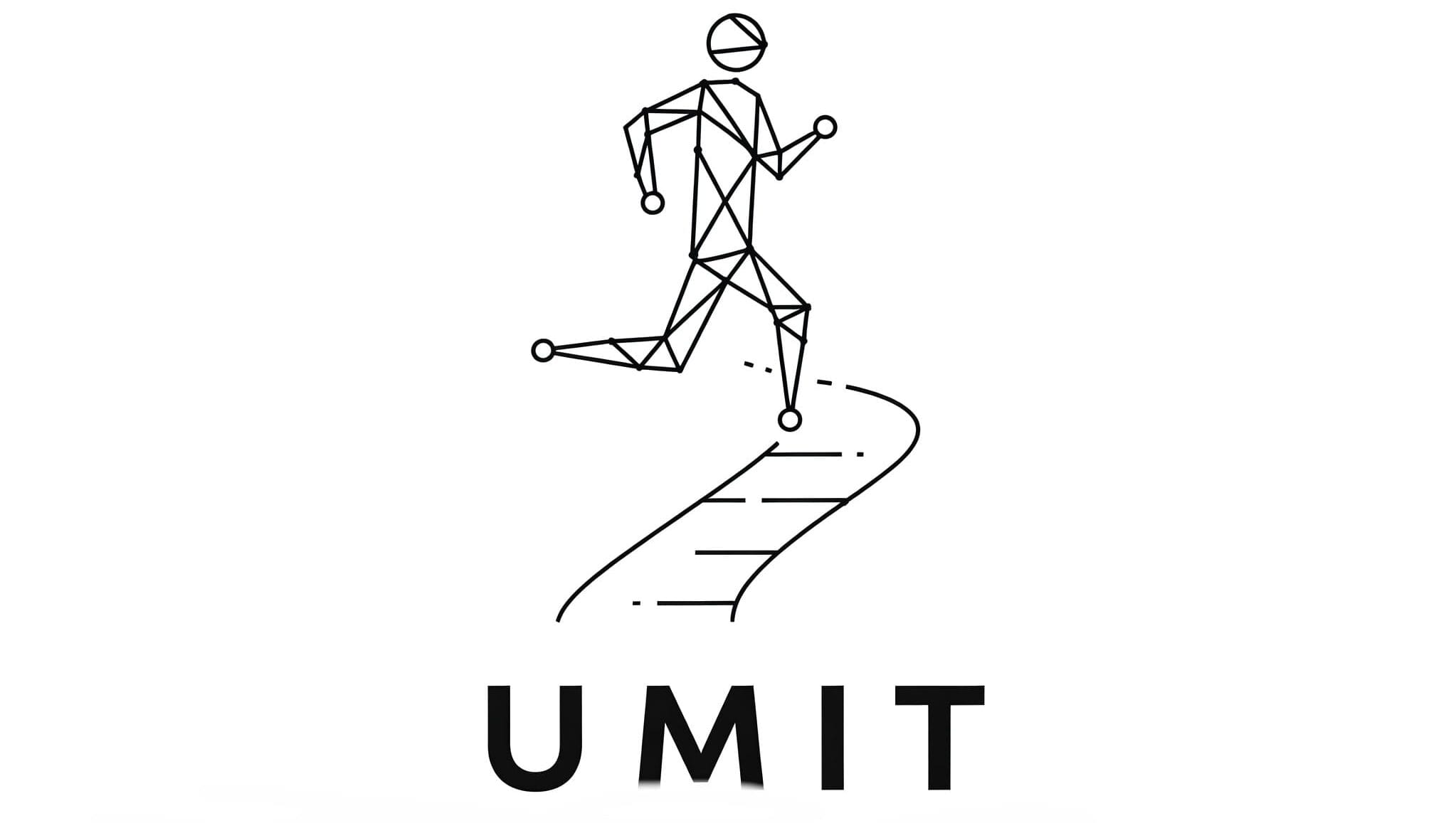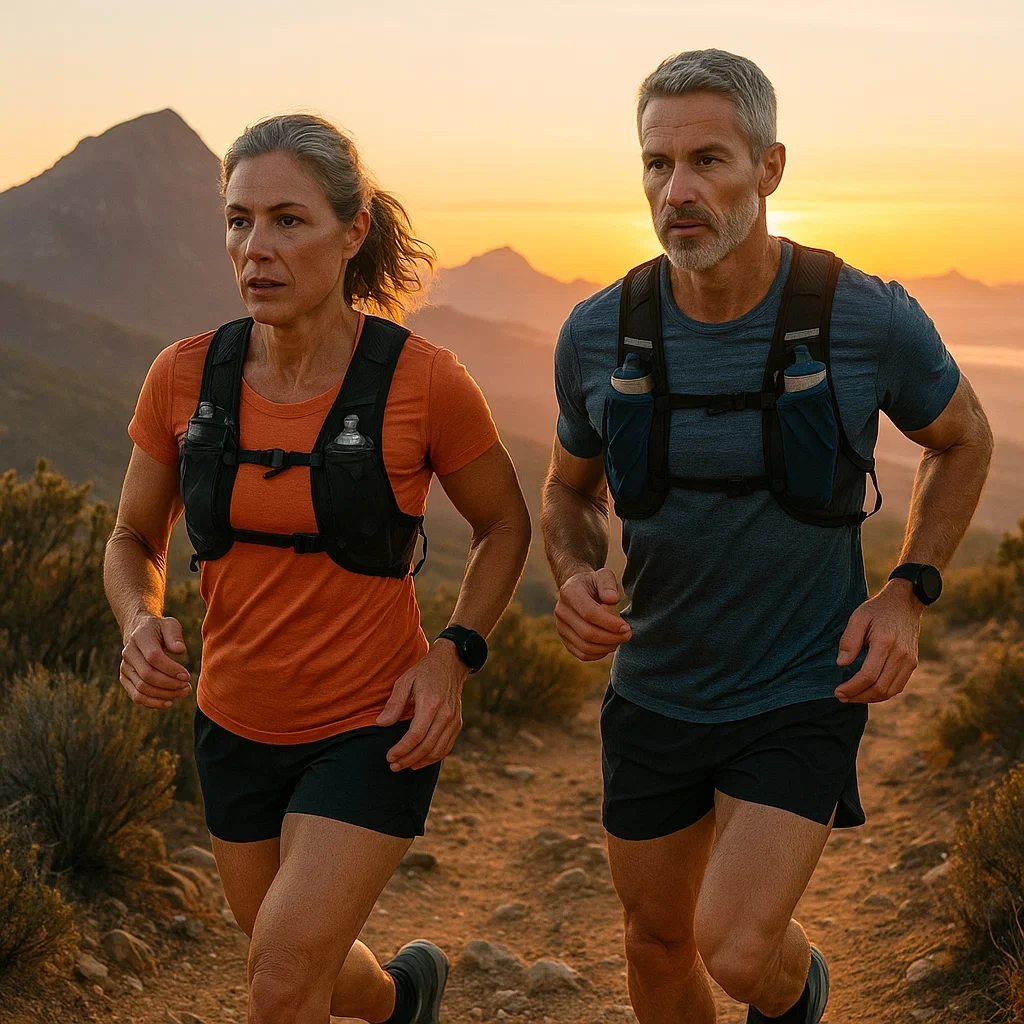Over 40? Over 50? Or just ready to defy the “rules” of aging? You’re in exactly the right place. Today, more runners than ever are lacing up for their longest adventures—after the big 4-0. In fact, the average age at the finish line of most ultramarathons is now over 45!
But what does it really take to thrive, not just survive, as a masters ultrarunner? Forget tired clichés—here, we go way beyond “slow down and be careful.”
- 🔬 Science-backed strategies for keeping your VO2 max high and your motivation higher
- 💪 Training plans that respect both wisdom and recovery
- 🧂 The best real-world nutrition and supplement tips for masters
- 🏅 How to race smarter, leverage age-grading, and actually get faster with every decade
Whether you’re chasing a 100-miler at 55 or running your first 50K after 60, this guide is your personal roadmap for the second golden age of running. Ready to leave your limits in the dust? Let’s get started!
If you’re running ultras over 40, you already know: your body’s rules start to change. But change doesn’t mean decline—it means adaptation, opportunity, and running smarter than ever before. Let’s dive into what actually happens inside the masters athlete, and how to work with—not against—your physiology for years of strong, happy miles.
VO2 Max: The Engine Slows—But Never Stops 🏎️
Yes, VO2 max—the single best measure of aerobic power—drops about 5–6% per decade after age 40 (sometimes more without training). That means your “all out” engine loses a bit of horsepower each year.
But here’s the secret: Masters who stay active, mix intensity, and train consistently can keep their VO2 max 30–40% higher than sedentary peers! Age isn’t destiny—use it as your coach.
Muscle & Strength: The Battle Against Sarcopenia 💪
Starting around age 50, we all face sarcopenia—muscle loss that slowly chips away at power and resilience. The result? Uphills feel steeper, and recovery can take longer. But the fix is simple: strength train twice a week (especially legs and core), keep protein intake high, and don’t fear hill work or plyometrics. Masters who lift and move dynamically keep running faster, longer, and stronger—period.
Recovery & Tendons: The New Golden Rule 💤
Recovery isn’t a luxury for masters—it’s essential. Connective tissues (like tendons and fascia) lose elasticity over time, making us more vulnerable to nagging injuries and aches.
What to do? Prioritize sleep, don’t skip rest days, and listen to “niggles.” Regular foam rolling and mobility drills can literally add years to your running career.
Hormones, Metabolism & Body Composition 🌱
Hormonal shifts (testosterone, growth hormone, estrogen) mean muscle repair slows and fat is easier to gain. But you can beat the odds: eat plenty of protein (1.4–2.0g/kg), fuel with whole foods, and avoid crash diets. Smart fueling = strong recovery.
Running Form, Economy & Biomechanics 🦵
Masters often develop a shorter stride, less ankle spring, and rely more on hip power. That’s normal! But form drills (skips, high knees), hill sprints, and regular mobility work can keep you moving smoothly and efficiently. Remember: small daily tweaks beat big, rare changes.
- 🟢 Pro tip: Track your resting heart rate and morning energy—over time, these are your best “age barometers.”
- 🔵 Another tip: Your PRs may change, but your capacity for adventure only grows. Use knowledge as your fuel!
The real secret? Masters runners who embrace change and train for their physiology don’t just keep up—they often keep getting better. You are the new generation of strong!
Forget “one size fits all”—masters runners thrive on smart, custom plans! Whether you’re racing 50K or 100 miles, the right structure helps you build fitness, avoid burnout, and keep loving the process. Here’s how to shape a program that fits your body, schedule, and ambitions after 40.
Weekly Mileage & Progression 🚦
For most experienced masters, 50–80 km per week (30–50 miles) is a sweet spot—enough for adaptation, not so much that you risk chronic injury.
Newer to ultras? Start with 30–50 km, then ramp up slowly. Golden rule: Increase volume no more than 10% per week, and always back off if fatigue lingers.
Balancing Intensity: The 80/20 Principle ⚖️
The 80/20 rule isn’t hype—it’s science! Spend about 80% of your time at easy to moderate paces (conversational effort), and reserve the last 20% for quality sessions:
- 🏃♂️ 1 weekly interval session (e.g., 5 x 4 min at 10K pace, 3 min jog rest)
- 🚀 1 tempo or threshold run (e.g., 30–40 min at “comfortably hard” pace)
- 🌄 Long run (usually weekend, often with race-day nutrition practice)
Hard days should feel purposeful—not just “hard for hard’s sake.” Listen to your recovery signals!
Long Runs & Back-to-Backs ⏱️
Long runs are still the magic ingredient for ultra endurance, but the secret is consistency, not overload. One long run (20–35 km) per week works well; for ultra simulation, do a back-to-back (e.g., 20 km Saturday + 20 km Sunday) every 3–4 weeks. Always insert extra recovery before and after.
Periodization & Deloading 🌗
Masters recover slower, so respect the rest! Every 3–4 weeks, plan a deload: drop mileage 25–35%, skip intervals, and prioritize sleep. Use these weeks to check for injury, get a massage, or just enjoy easy miles.
Strength, Cross-Training & Mobility 💪🧘♂️
- 💪 Strength training: 2x per week, all year. Lower body, core, and balance work prevent muscle loss and injury.
- 🚴 Cross-training: Replace 1–2 runs a week with cycling, swimming, or hiking for extra aerobic support.
- 🧘 Mobility & flexibility: Yoga, dynamic stretching, and foam rolling are your allies for lifelong movement.
Tracking & Adapting 📈
Don’t just “do the plan”—track how you feel. Monitor your resting HR, HRV, and mood. If recovery lags, back off and reload later. Your best training plan is the one you can do year-round, without injury or burnout.
- 🟢 Lost Pace Tip: Mix things up! Try new routes, add soft trails, and run with friends. Fun and curiosity keep you coming back.
- 🔵 Checklist: Consistency > Perfection. Recovery is training. Smart > Tough.
Ready to craft your most rewarding season yet? With a flexible, thoughtful plan, your best ultras may be just ahead—at any age.
Not all ultras are created equal—and neither are the surfaces you run on! Whether you’re eyeing a gnarly mountain 100K, a rolling woodland trail, or a flat and fast road ultra, your preparation needs to match the challenge. Masters runners who train specifically for their target terrain don’t just avoid injuries—they finish stronger and happier.
Trail & Mountain: Embrace the Wild 🏔️
- 🏃♂️ Hill repeats: Do short, steep climbs to build leg and lung power. Mix hiking and running—both count on race day!
- 🦵 Eccentric strength: Add downhill running, box jumps, and controlled step-downs. These protect your quads and knees for brutal descents.
- 🧗♀️ Power hiking: Practice with a loaded vest or pack on steep grades. You’ll pass many “runners” who never train their hiking engine.
- 🌳 Technical footwork: Rock hops, agility drills, and quick strides on uneven terrain sharpen reflexes and prevent stumbles.
- 🌬️ Weather adaptation: Practice in rain, wind, or heat if your target race is unpredictable. The elements are part of the ultra story!
Trail wisdom: Invest in ankle mobility and core stability—both will save your season on technical ground.
Road: Precision & Efficiency 🚦
- 🏃 Race-pace intervals: Practice sustaining target pace on smooth surfaces. Try “cruise intervals” (e.g., 4 x 2 miles at 80% effort).
- 👟 Shoe rotation: Use multiple pairs—cushioned, responsive, and lightweight—to reduce repetitive stress.
- 🔄 Cadence drills: Work on fast feet and smooth stride; aim for 170–180 steps per minute when fresh.
- 🧍 Form checks: Late in long runs, focus on posture—tall, relaxed shoulders, hips under you.
- 🗺️ Route variety: Alternate loop and out-and-back runs to reduce mental fatigue.
Road wisdom: Add mini-strides (20–30 sec quick bursts) at the end of easy runs to stay sharp without adding wear and tear.
Mixed Terrain: Adaptability is Your Superpower 🔄
- 🔀 Hybrid long runs: Combine trails, hills, and paved sections in a single run. Teaches your legs to adapt “on the fly.”
- 👣 Shoe strategy: Practice with both trail and road shoes if your race switches surfaces. Blisters and hot spots are real!
- ⛰️ Transition practice: Simulate aid stations or surface changes—take a quick pause, stretch, and adjust fuel if needed.
- ⏳ Back-to-back runs: Do one day on trails, next day on road. This combo builds robust, resilient legs for any race surprise.
Mixed-terrain wisdom: Flexibility in your training = flexibility on race day. Adaptable runners finish smiling.
- 🟢 Lost Pace Tip: Film yourself on hills and descents. Small tweaks in form can prevent months of trouble down the road.
- 🔵 Checklist: Match your weekly “terrain load” to your race profile. Practice on your weakness, not just your favorite!
Final thought: The more closely you train for your goal race environment, the more confident—and injury-proof—you’ll be at the starting line. Terrain is not your enemy; it’s your training partner.
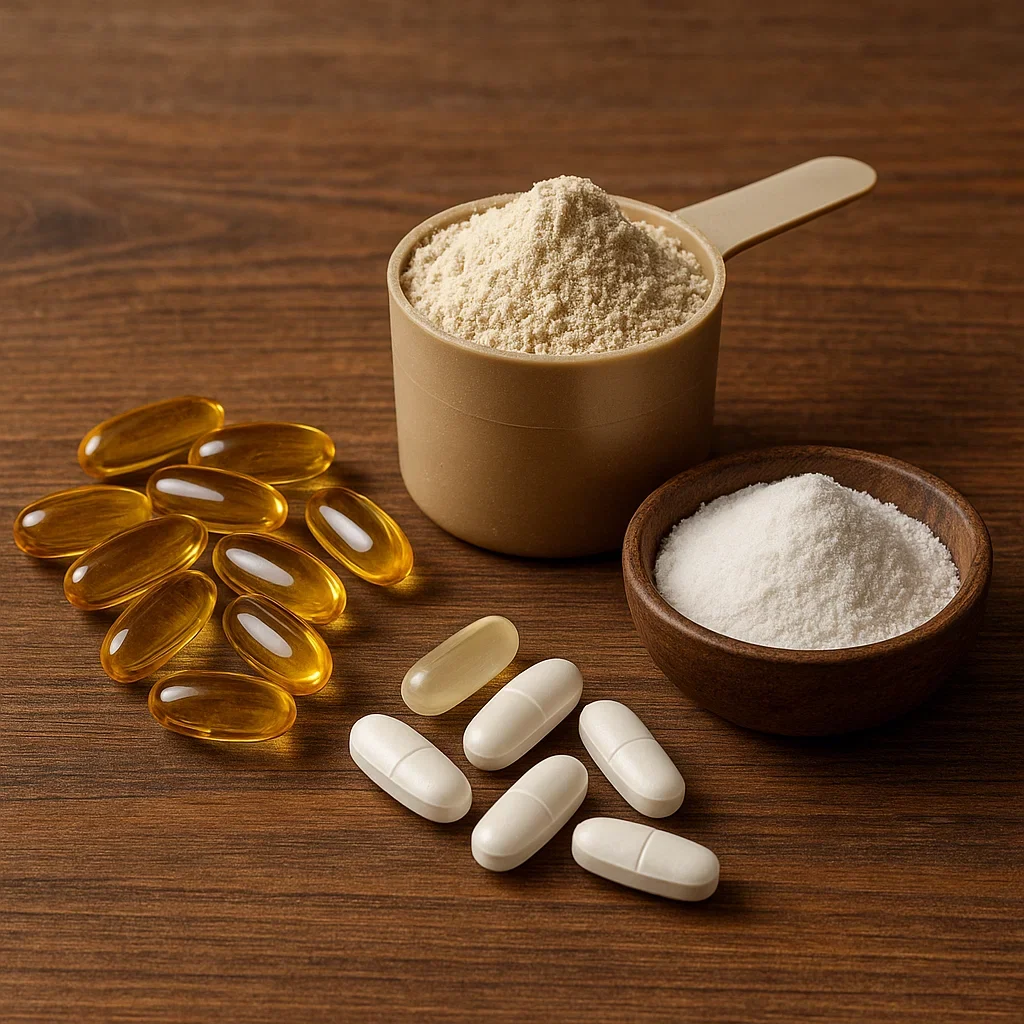
Fueling your adventures gets more important with every year you run. As a masters athlete, your body’s recovery, immune system, and even energy levels are deeply shaped by what (and when) you eat and drink. Ignore this, and you’ll hit a wall—embrace it, and you’ll bounce back faster than runners half your age!
Protein: Your Best Friend for Longevity 🫘
Masters runners need more protein, period. Shoot for 1.4–2.0g per kilogram of bodyweight daily. This helps fight muscle loss (sarcopenia), keeps your immune system strong, and turbocharges repair. Pro tip: Spread your intake across 3–5 meals/snacks. Think beans, lentils, tofu, seitan, or plant-based protein powders for the win.
Carbs: The Essential Ultra Fuel 🍞🍚
Carbs aren’t just for the young. 6–10g/kg/day keeps your glycogen stores topped up for big training weeks. Prioritize whole grains, oats, sweet potatoes, and fruit. Cutting carbs = slower recovery and higher injury risk.
Fats: Hormones & Endurance Booster 🥑
Healthy fats (avocado, olive oil, walnuts, chia, flaxseed) should make up 20–30% of your calories. They help regulate hormones, keep you full, and power those epic days.
Micronutrients: The Masters Essentials 💊
- 🦴 Calcium & Vitamin D: Protect bones—especially if you’re vegan or postmenopausal.
- 🔋 Iron: Get levels checked; low iron = fatigue and poor adaptation.
- 💡 Magnesium: Aids muscle function and sleep. Found in leafy greens, nuts, seeds.
- 🧠 Vitamin B12: Critical for vegans and older adults—consider regular supplementation.
Hydration: The Overlooked Game-Changer 💦
- 🥤 Everyday: Sip water throughout the day. Aim for pale straw-colored urine, not clear or dark.
- 🧂 During long runs: 300–500ml fluid per hour + sodium/electrolyte tabs or real food (salty pretzels, pickles).
- 🕒 Before: Start hydrated—chugging the morning of a race won’t fix a week of “behind.”
- ⚖️ Check-ins: Weigh yourself before/after a long run to estimate sweat loss (1kg lost = 1L water).
Golden rule: Practice your race nutrition and hydration plan during training—not just on race day. Gut adaptation takes time!
- 🟢 Lost Pace Tip: Meal prep is your recovery hack. Chop veggies, soak oats, and keep trail snacks ready—you’ll make better choices when tired.
- 🔵 Checklist: Eat colorfully, hydrate smart, recover like it matters—because it does!
Eat for strength, hydrate for resilience. What you put in truly shapes the runner you become after 40!
You can’t out-train a bad recovery routine—especially after 40! For masters runners, smart supplementation isn’t about chasing magic pills, but about filling gaps, protecting your body, and speeding up the rebuild so you’re ready for tomorrow’s miles. Here’s the evidence-based essentials every masters ultrarunner should know.
Protein: The Repair King 🍲
Protein powders (whey, soy, or pea) offer a fast, convenient way to hit that crucial 1.4–2.0g/kg target, especially after hard or long runs. Mix in oats, blend into smoothies, or just shake and go. Pro tip: Look for options with 20–30g protein per serving and minimal sugar.
Creatine: More Than Just for Powerlifters ⚡
Creatine monohydrate isn’t just for gym buffs! For masters, it helps maintain muscle mass, improves short-burst power (think uphills, sprints), and even supports cognitive health. Safe and well-studied, just 3–5g daily (with or after food) is enough. Bonus: Plant-based runners benefit most, as plant foods contain very little creatine naturally.
Omega-3: Anti-Inflammatory Magic 🐟🌱
Omega-3 fatty acids (EPA/DHA) are crucial for masters runners. They reduce chronic inflammation, support heart and brain health, and aid muscle recovery.
- Fish oil, algae oil (vegan), or chia/flax as daily sources.
- Aim for 1–3g total EPA/DHA per day from supplements and food.
- Notice fewer aches and faster bounce-back!
Vitamin D: Bone & Immune Guardian ☀️
Vitamin D3 is vital for bone strength, immunity, and even muscle power. Masters runners—especially those training indoors or in winter—are often deficient. Get your levels checked annually, and supplement as needed (often 1000–2000 IU/day is sufficient, but your doctor should advise).
Magnesium: The Recovery Mineral 🧂
Magnesium helps muscle relaxation, prevents cramps, and supports sleep. Dark chocolate, seeds, leafy greens, and magnesium supplements (citrate/glycinate) are your go-to. Take at night for better rest and less soreness!
Iron & B12: Oxygen Delivery & Energy Support 🔋
Iron and Vitamin B12 are critical, especially for plant-based runners and older adults. Low levels = fatigue, poor recovery, and even injuries. Always test first (don’t supplement blindly!), then top up with diet and physician-approved products.
- 🟢 Lost Pace Tip: Don’t buy into “magic stacks.” Start with the basics—protein, creatine, omega-3, vitamin D—and only add more if bloodwork or a sports dietitian suggests it.
- 🔵 Checklist: Take your supplements consistently—not in megadoses, not “whenever you remember.” Recovery is a daily habit.
Supplements are the turbo boost for your recovery engine. Used wisely, they help you stay in the game and chase finish lines for years to come!
Ever wonder how your ultra times compare to your younger self—or to the current crop of speedsters? That’s where age-grading comes in! For masters runners, age-grading is more than just a number; it’s a powerful tool for motivation, goal-setting, and celebrating real progress as the years go by.
What Is Age-Grading? 🎯
Age-grading adjusts your race time based on your age and sex, showing how close you are to the “world’s best” for your demographic. For example, a 50-year-old running a 50K in 5:30 might earn the same age-graded score as a 25-year-old running 4:30!
- 📊 Percentage system: Your finish is scored as a % of the age-group world record. 100% = world best. 70–80% = very competitive. Over 85%? You’re elite!
- 🧑💻 Calculators: Plug your time, age, and gender into online age-grading calculators (many ultra events provide this automatically now).
- 📈 Lifetime comparison: Track your performance year by year, even as raw times change. Watch your “real” progress grow!
Why Does Age-Grading Matter? 🧠
• Levels the playing field—celebrate improvement at ANY age
• Sets realistic goals that motivate, not frustrate
• Masters runners often move UP the leaderboard with age-grading!
How to Use Age-Grading in Your Training & Racing 📅
- 🎯 Goal-setting: Instead of chasing lifetime PRs, aim for a new “best” age-graded score each year.
- 🏆 Competition: See where you rank nationally or globally for your age group. Podium finishes are within reach!
- 🔄 Mindset: Bad weather, slow course? No problem. Age-grading helps you see the big picture—not just a single day’s time.
Real-World Example: Age-Grading at Work 🔍
Jane, age 52, runs a tough 50K in 6:00. Her age-graded score: 77%—top 10% for her group, and “faster” (by age-grading) than her 38-year-old time of 5:10 (73%). Age-grading shows you’re improving—no matter what the calendar says!
- 🟢 Lost Pace Tip: Review your age-graded results after every big race. Celebrate the %—not just the raw number!
- 🔵 Checklist: Bookmark an age-grading calculator, and use it to set or revise your annual goals.
With age-grading, every finish line becomes a win—at every age.
VO2 max: It’s the powerhouse behind your endurance and speed. After 40, it’s natural for VO2 max to tick downward—but it’s absolutely possible to slow the decline and, in some cases, even see gains. Here’s how smart masters runners stay ahead of the curve.
Keep the Engine Running: Training Strategies 🚦
- 🔥 Interval Training: Once a week, add high-intensity intervals (3–6 minutes “hard”/equal “easy”) to challenge your heart, lungs, and muscles. Intervals are the #1 research-backed tool to stimulate VO2 max!
- ⏱️ Tempo Runs: Regularly running 20–40 minutes at “comfortably hard” (just below all-out) pushes your lactate threshold, helping VO2 max and endurance.
- ⛰️ Uphill Work: Hill sprints and steady uphill running maximize cardiac output—no speedwork needed!
- 🌄 Consistency: Don’t let your aerobic base drop; even modest mileage, kept steady, protects your fitness better than all-or-nothing cycles.
Strength & Cross-Training: Your Secret Weapons 🏋️♂️🚴
- 💪 Strength training (2x/week): Preserves muscle fibers, boosts metabolic rate, and keeps your running economy sharp—especially in masters athletes.
- 🚴 Cross-training: Cycling, swimming, or brisk hiking offer big aerobic bang with less pounding. Keeps you training even if niggles crop up.
- 🦵 Plyometrics: Box jumps, bounding, and skipping reinforce powerful muscle contractions for uphill and fast finishes.
Lifestyle Habits for Peak Aerobic Power 🌙🥗
- 😴 Prioritize Sleep: Deep sleep is when adaptation happens—aim for 7–9 hours most nights.
- 🥗 Eat enough: Chronic underfueling leads to rapid VO2 max loss. Don’t be afraid of carbs, and keep protein high.
- 📉 Monitor Resting HR/HRV: A rising resting heart rate or dropping HRV often signals you need more recovery, not more intervals.
- ⛰️ Train at Altitude (if possible): Even short stints at altitude can offer a VO2 max “boost”—and it’s a fun excuse for a mountain adventure!
Reality check: Even world-class masters runners lose VO2 max slowly with age—but by keeping a mix of consistent volume, regular intensity, and smart lifestyle habits, you can perform far above the norm for your age group.
- 🟢 Lost Pace Tip: If you must skip something, skip the intervals before you skip the sleep.
- 🔵 Checklist: 1x interval, 1x tempo, weekly strength, and eat like you mean it—VO2 max is built, not born.
With the right approach, your engine can keep humming for decades.
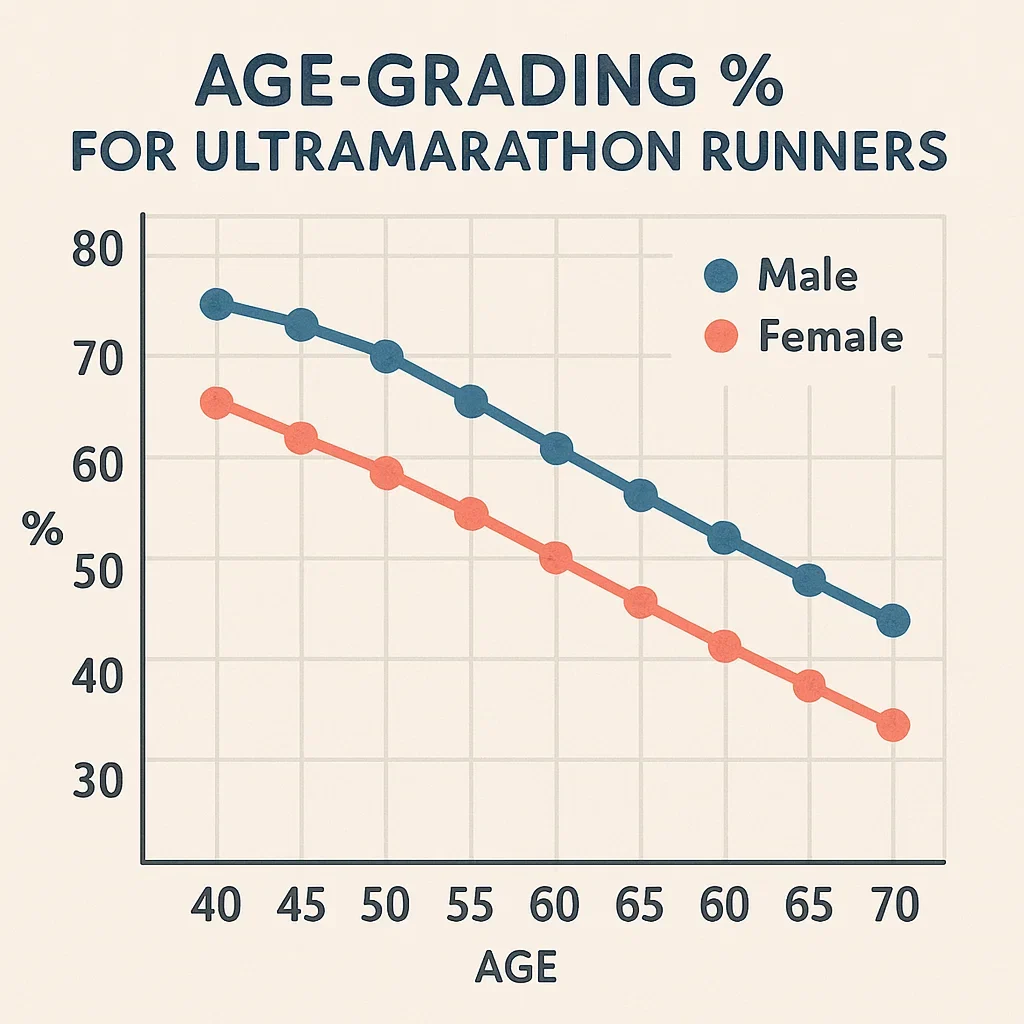
Consistency is your greatest strength after 40—but only if you can stay healthy! Masters runners are more likely to face overuse aches, tendon issues, and slow-to-heal niggles, but that doesn’t mean injuries are inevitable. The key? Make prevention and recovery part of your training plan, not an afterthought.
Know Your Risk Zones 🚩
- ⚡ Calf & Achilles: Tightness, tendonitis, or sudden strains become more common. Add eccentric calf raises and mobility work twice weekly.
- 🦵 Hamstrings & Glutes: Weakness here = poor running form and more strain on knees/hips. Prioritize single-leg bridges, band walks, and dynamic stretching.
- 🦶 Knees & Hips: Extra mileage and aging cartilage mean more aches. Keep strength and flexibility work in your plan year-round.
- 🔁 Overtraining: Masters recover slower. Take rest days and back-off weeks seriously!
Strength, Mobility, and Balance: The Holy Trinity 🧘♂️🏋️♂️
- 🏋️♂️ Strength train twice weekly: Focus on squats, lunges, deadlifts, and core. Use bodyweight or moderate weights.
- 🧘♀️ Mobility drills: Dynamic warm-ups and cool-downs before/after every session prevent stiffness.
- 🦶 Balance work: Single-leg stands, wobble boards, and agility ladder drills reduce fall risk and build joint resilience.
Listen, React, Adapt 🔊
- 👂 Track niggles: Rate aches on a 1–10 scale. If something climbs above a 3, modify your week—better to lose a day than a season!
- ❄️ Act early: Don’t “run through” pain. Ice, elevate, self-massage, and consult a sports physio at the first sign of real trouble.
- 🛌 Prioritize sleep: Most tissue repair happens at night. Guard your bedtime like a workout!
Recovery Routines That Actually Work ♻️
- 🧊 Active recovery: Gentle cycling, swimming, or walks keep blood flowing without impact.
- 🧘♂️ Yoga & stretching: Increase flexibility, reduce stress, and keep you mobile for the long run.
- 🔄 Rest days: 1–2 days off running per week (or active recovery only) keeps your “freshness” high and injury risk low.
- 🧴 Foam rolling/massage: Use daily, especially on tight or sore spots. Your future self will thank you.
- 🟢 Lost Pace Tip: Treat “little things” early. A rest day today can save you a DNF (or months off) later.
- 🔵 Checklist: Warm up, strength train, monitor soreness, sleep well, and be honest about pain.
Long-term health = long-term performance. Masters who recover as hard as they train stay on the trail, year after year.
Race day: where months of focused training and smart recovery come together for your big adventure! As a masters ultrarunner, you bring a secret weapon to the start line: experience. Still, the challenges change with every decade—so here’s how to stack the odds in your favor from dawn to finish line.
Pre-Race Prep: Prime Yourself for Success ⏳
- 🛌 Prioritize rest: Two nights before the race is the most important sleep. Keep your week easy, skip “panic miles.”
- 🍽️ Nutrition dial-in: Eat familiar, high-carb meals. Avoid anything new or risky—your gut will thank you.
- 💧 Hydration: Don’t overdrink! Sip steadily, pee pale, and include electrolytes the day before.
- 🎒 Gear check: Lay out kit, shoes, and drop bags the night before. Test everything in training—no surprises!
- 🧘 Mental rehearsal: Visualize the start, aid stations, and that strong finish. You’ve done the work—now trust it.
Pacing and Energy: The Masters Advantage 🐢⚡
- ⏱️ Start conservatively: Even pacing wins the ultra. Hold back in the first third—most DNF’s come from too-fast starts.
- 🧠 Check in often: Scan your effort every 30–45 minutes. Rate your energy, legs, and mood. Adjust before things go south.
- 💡 Negative splits: Aim to run the second half as strong (or stronger) than the first. Masters who finish passing people finish happy!
- 🗺️ Break it up: Mentally split the race into sections (aid stations, climbs, descents). Focus on one chunk at a time.
On-Course Fueling and Hydration 🚰🍌
- 🍯 Start early: Begin fueling within the first 45 minutes—even if you’re not hungry or thirsty.
- 🍞 Carbs count: 30–60g of carbohydrates per hour keeps your engine running, especially in the second half.
- 🧂 Electrolytes: Salt tabs or real food (nuts, pretzels, pickles) help prevent cramps—adjust for heat!
- 🥤 Fluids: Drink to thirst; listen to your body, not just your watch.
- 🚨 Gut check: If your stomach turns, slow down, walk, and switch to sips or bland foods. Gut issues are common but beatable!
Problem-Solving and the Mental Game 🧩🧠
- 🧘 Stay flexible: Weather changes, nutrition fails, gear breaks—expect the unexpected. Adapt, don’t panic.
- 👀 Mantra power: Use short phrases (“relax and flow,” “just this mile”) to calm nerves or push through tough stretches.
- 🦸 Experience edge: Masters often outperform younger runners simply by making fewer mistakes and recovering from setbacks quickly.
- 🌅 Celebrate finish lines: Whether it’s a PR, age group podium, or just finishing happy—give yourself credit. Every finish is a win!
- 🟢 Lost Pace Tip: Write your race plan down and tape it to your drop bag. A small reminder can save you when the going gets foggy.
- 🔵 Checklist: Prep, pace, fuel, adapt, and enjoy—masters runners know how to make every race an adventure!
On race day, wisdom and joy are your greatest assets. Run smart, savor the journey, and carry your hard-earned experience all the way to the finish!
❓ Frequently Asked Questions
🟦 How much weekly mileage is ideal for ultramarathon training after 50?
🟦 Are there supplements proven for recovery in masters ultrarunners?
🟦 What’s the best way to prevent injury as a masters runner?
🟦 Should I still do intervals and tempo runs after 50?
🟦 Is it normal for my easy pace to slow down with age?
🟦 Can I still hit personal bests after 50 or 60?
🟦 How can I tell if I’m overtraining?
🟦 What about bone health for older runners?
🟦 Should I switch to trail or road ultras as I age?
🟦 How often should I have my bloodwork checked?
🟦 What’s the best cross-training for masters ultrarunners?
🟦 Do I need a coach as a masters runner?
🟦 How do I deal with slower recovery?
🟦 What are the signs I need to take a day off?
🟦 How do I stay motivated for long-term training?
🟦 Is strength training really necessary for masters?
🟦 What’s the best post-race recovery tip?
🟦 Can I run ultras after 70?
🟦 Should I change my race goals as I age?
🟦 What’s the single best thing I can do for ultra longevity?
📚 Further Reading
Explore these resources for even deeper dives! There’s always something new to learn, and the journey is half the fun.
🧩 Quick Quiz: Are You Training Smart for Ultras After 40?
Curious how your habits stack up? Test yourself! Each “Yes” means you’re on the path to sustainable ultra success.
- Do you adapt your training volume and intensity every 3–4 weeks with a deload or rest week?
- Are you hitting at least 1.4g/kg of protein per day from a mix of whole foods and supplements?
- Do you include at least one session of intervals or tempo work each week?
- Is strength training a regular (2x/week) part of your program, year-round?
- Do you monitor your recovery using morning heart rate, HRV, or mood tracking?
- Have you ever calculated your age-graded performance for a recent ultra?
- Do you take at least one full rest or active recovery day per week?
- Are you fueling with at least 30–60g carbs/hour during long races?
- Do you supplement with omega-3, vitamin D, or creatine if your diet is low in these?
- Have you had bloodwork (iron, B12, vitamin D) checked in the past year?
✅ Quiz Answers & Score
- 8–10 Yes: Ultra Master! You’re nailing the science. Keep it up and inspire others on the trail. 🏆
- 5–7 Yes: On the Right Track. A few tweaks will help you stay healthy and strong for seasons to come.
- 0–4 Yes: Time to Reboot! Don’t worry—use this guide to transform your training, one habit at a time.
Share your score and see how you compare! Every new step counts.
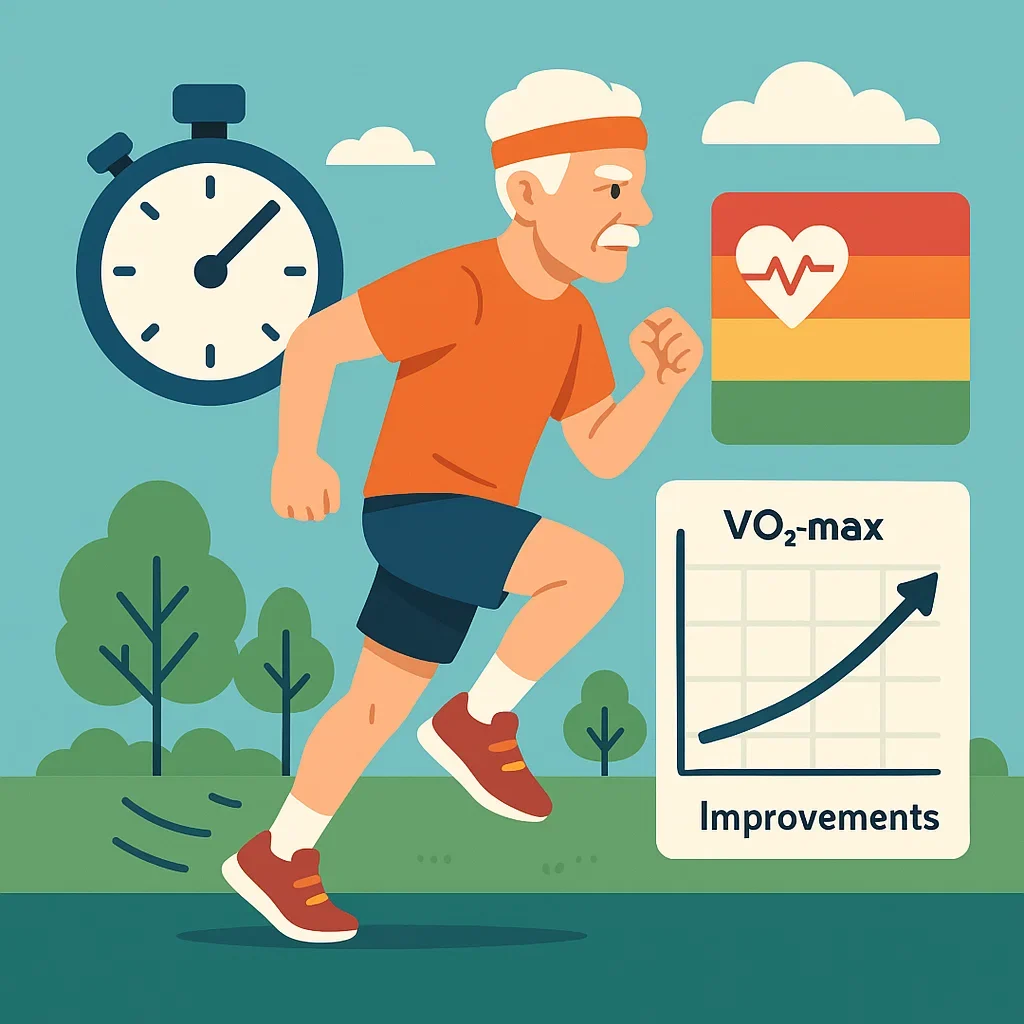
✨ Final Thoughts
You’re not just “still running”—you’re part of a movement redefining what’s possible at every age! Masters runners are showing the world that experience, resilience, and smart science can go further than youth and bravado. Every hill climbed, every finish line crossed, and every recovery mastered is proof: your best years on the trail may still be ahead.
Remember, it’s never about “chasing your younger self”—it’s about becoming your best self, right now. Respect your body. Adapt with intention. Stay curious, keep learning, and lean on your community. If you listen to your body, train with purpose, and recover like you mean it, age becomes just another data point—not a limitation.
- 🌱 Stay consistent. Your longevity is built on today’s choices.
- 🤝 Connect with others. Community and shared wisdom will lift you higher.
- 🔥 Embrace the challenge. Each race and season is a new chapter in your ultra story.
- 🚀 Never stop exploring. There’s always more to discover about yourself, your limits, and the world’s trails.
Subscribe for the latest ultra insights & community!
Keep moving, keep learning, keep inspiring—your next finish line is waiting!
Recommended Books for Ultramarathon Masters
Training Essentials for Ultrarunning by Jason Koop
A science-driven guide for ultramarathon training, offering strategies for pacing, interval training, and fueling. It’s ideal for masters runners looking to optimize performance, improve VO2-max, and enhance recovery with practical advice for races like Western States 100.

Hal Koerner’s Field Guide to Ultrarunning by Hal Koerner
.ConcurrentModificationExceptionPractical training plans and race strategies for 50K to 100-mile ultramarathons, focusing on endurance and pacing. Perfect for masters runners aiming to master trail running techniques and prepare for ultra events.

Relentless Forward Progress: A Guide to Running Ultramarathons by Bryon Powell
A go-to guide for first-time ultrarunners, offering daily training plans and race-day strategies. It’s suitable for masters runners focusing on building endurance and mental toughness for ultra events.

Daniels’ Running Formula by Jack Daniels
A science-based training manual focusing on VO2-max and lactate threshold improvement. It’s essential for masters runners aiming to prevent aerobic decline through structured training programs.

The Sage Running Secret by Sage Canaday
Introduces speed work like fartlek and tempo runs to improve VO2-max and running efficiency. A great resource for masters runners looking to maintain aerobic capacity with accessible training methods.

Nutrition for Runners by Jason Fitzgerald and Anne Mauney
A comprehensive guide to nutrition and recovery, offering meal plans and fueling schedules. It’s ideal for masters runners seeking to optimize recovery with supplements like protein and carbohydrates.

🎥 Video Suggestions: Ultramarathon Training & Recovery for Masters Runners (40+)
🏃♂️ Best Strategies for Masters Runners, by PTs
Practical training, nutrition, and recovery advice for runners 40+ from expert physical therapists.
🧠 Tim Tollefson’s Best Recovery Tips After an Ultramarathon Race
Pro ultrarunner Tim Tollefson shares his top recovery routines and lessons after demanding ultra events.
🔄 Master Your Running Recovery: The Ultimate 7-Step Guide
A complete, actionable guide to optimizing your recovery routine after long-distance running.
🧓 Top 5 Tips for Runners Aged 40+ – How to Recover Quicker
Fast, science-backed recovery tips tailored for the masters age group and veteran ultrarunners.
🏔️ How I Like to Recover from Ultra Marathon Training | EP006
Personal vlog sharing detailed recovery methods after a tough 50-mile (80K) ultra trail training session.
🏆 What I Have Learned From Winning Over 40 Ultramarathon Races
Veteran ultrarunner shares key lessons, including recovery, from decades and dozens of wins.

About the Author
Lost Pace is an ultramarathon runner, shoe-tester and the founder of umit.net. Based year-round in Türkiye’s rugged Kaçkar Mountains, he has logged 10,000 + km of technical trail running and completed multiple 50 K–100 K ultras.
Blending mountain grit with data, Lost analyses power (CP 300 W), HRV and nutrition to craft evidence-backed training plans. He has co-written 260 + long-form guides on footwear science, recovery and endurance nutrition, and is a regular beta-tester of AI-driven coaching tools.
When he isn’t chasing PRs or testing midsoles, you’ll find him sharing peer-reviewed research in plain English to help runners train smarter, stay healthier and finish stronger.
Ultrarunner · Data geek · Vegan athlete
